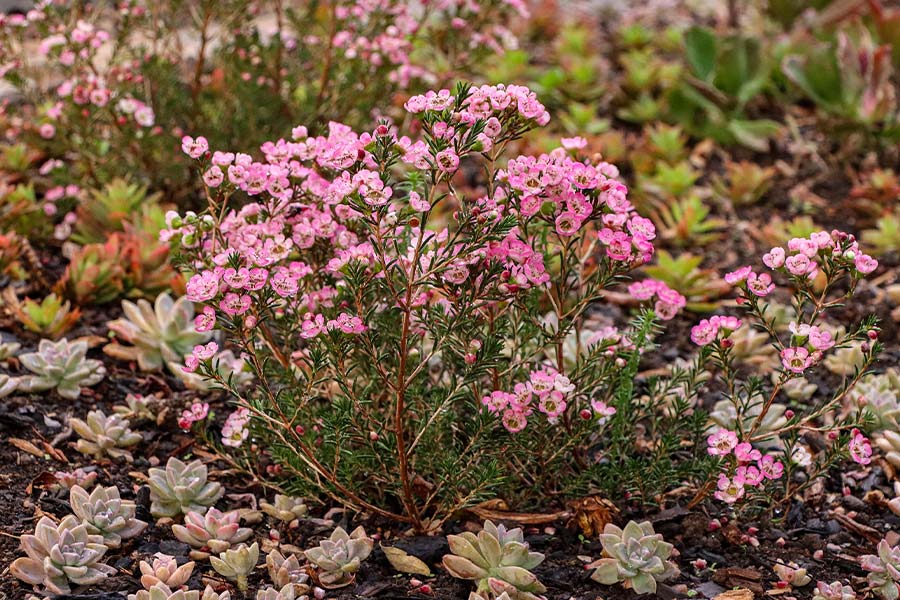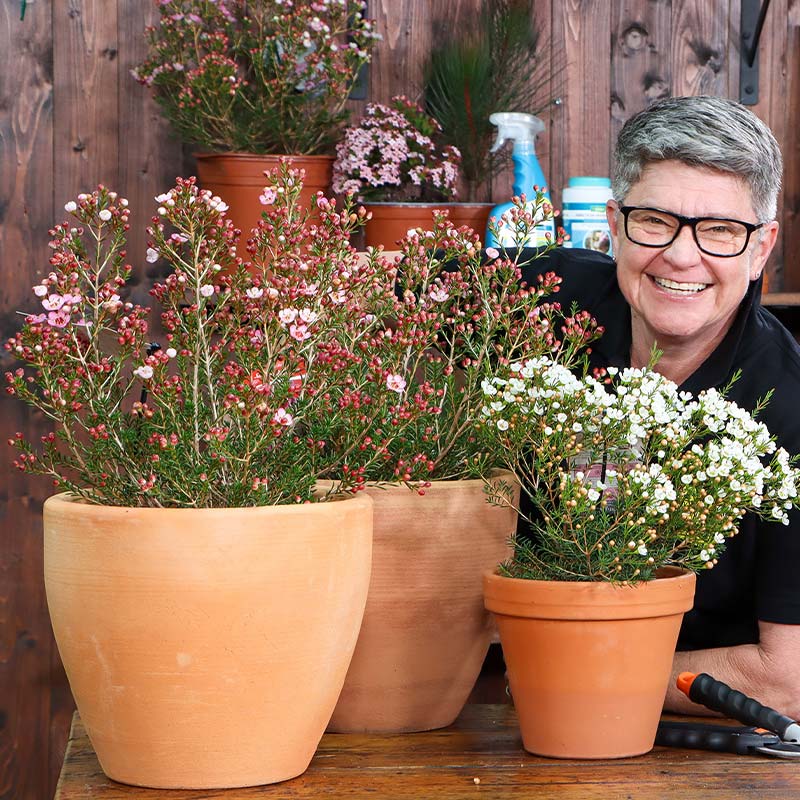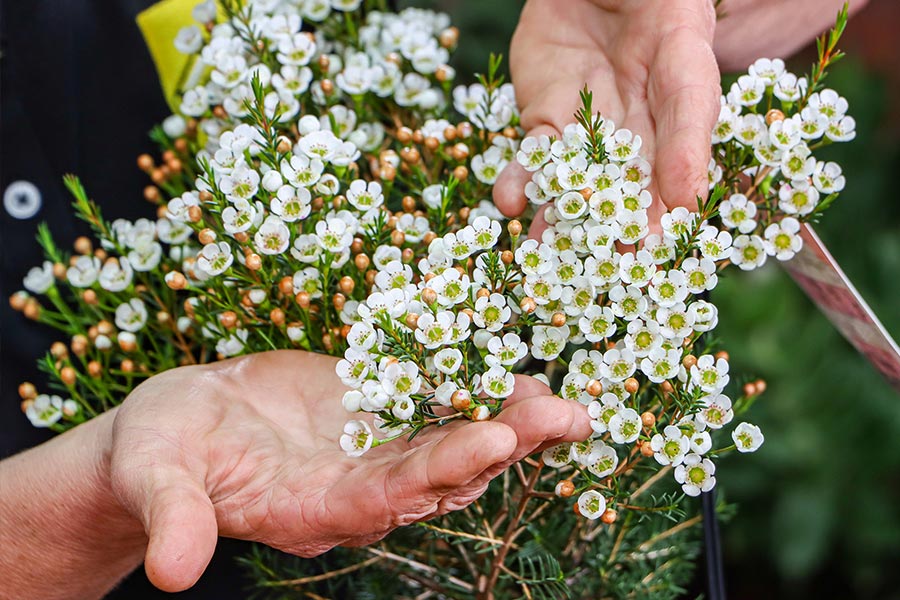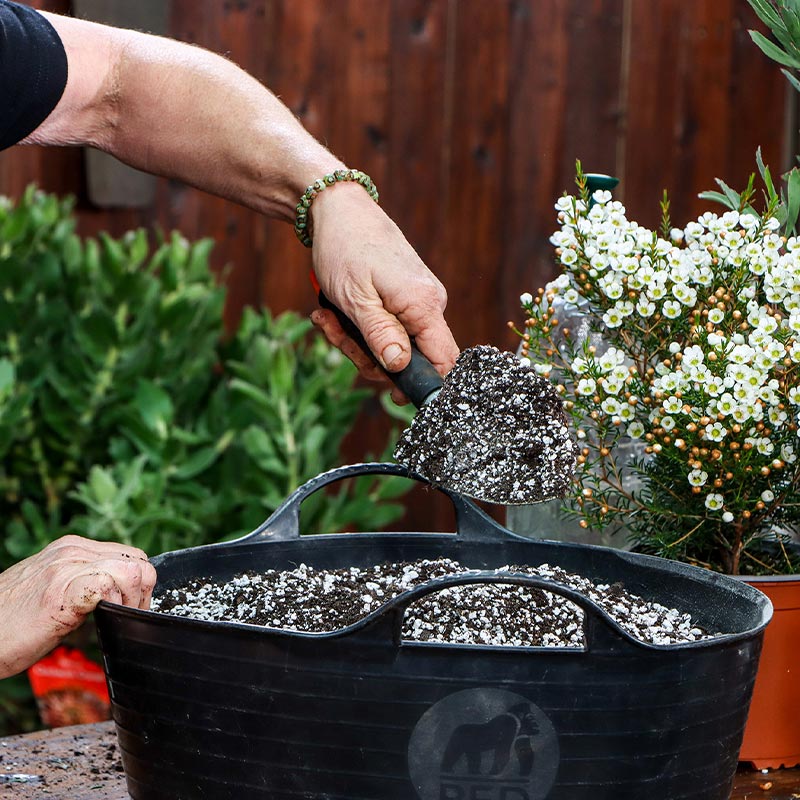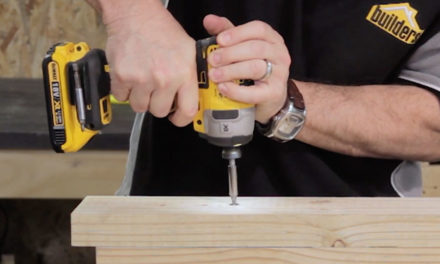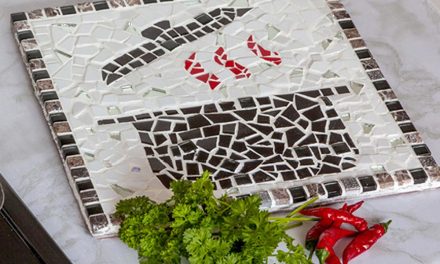This plant has been on the scene for decades and remains a beautiful ornamental that deserves a spot in your garden.
The beautiful flowers are full of fragrance – a sweet, honey scent – and they ooze nectar. It is this honey scent and the copious nectar that attract butterflies, bees and other pollinators to the plant (as well as humans!).
The plant grows into a round shape that can be pruned into a thick shrub. While we’re talking about pruning, remember that pruning of a Geraldton wax needs to be done after flowering or you will prune away all the beautiful buds. To restrict growth, prune away a third of the plant – never more than that.
The evergreen, multi-stemmed shrubs have thin woody stems that are covered with little bright or dark green, sometimes even lime-green, needle-like leaves that give off a pleasant lemony smell when crushed.
What we love about these plants is their versatility. There are also some new cultivars that are frost hardy, right down to -2°C, while other hybrids have a more compact, dwarf growth habit that makes them perfect for containers or the smallest of gardens. Original varieties don’t cope with frost and they don’t like humidity either.
When potting a Geraldton wax, the soil mix is all important. In a bucket or trug, start with a premium potting soil like Garden Master Premium Potting Soil, which already contains perlite for improved drainage. Despite this, these soils are designed to retain moisture and need to be amended to drain better. You can add more perlite into your potting mix to achieve this, or you can simply add river sand. In terms of ratio, we recommend two parts potting soil to one part perlite.
As for the pot itself, it’s important that you don’t go too big. Stick to one size larger than the pot the plant came in and make sure it has a good drainage hole. If you use a pot that is too big, the soil will dry too slowly, making your plant susceptible to root rot.
When preparing the pot, remember to add stones or pieces of crock to the pot first, creating a layer that will stop the drainage hole from getting blocked and will keep the soil from washing away. Alternatively, a piece of shade cloth will also do the job.
Whether in pots or the garden, Geraldton wax plants need full sun (remember, Australia!), but they do need shelter from wind. From spring to summer and autumn, give just enough water to keep the soil moist. In winter, water sparingly so that the soil dries out between waterings.
Remember, everything you need to plant and take care of your Geraldton wax plant is available from Builders, either in-store or online at builders.co.za.

